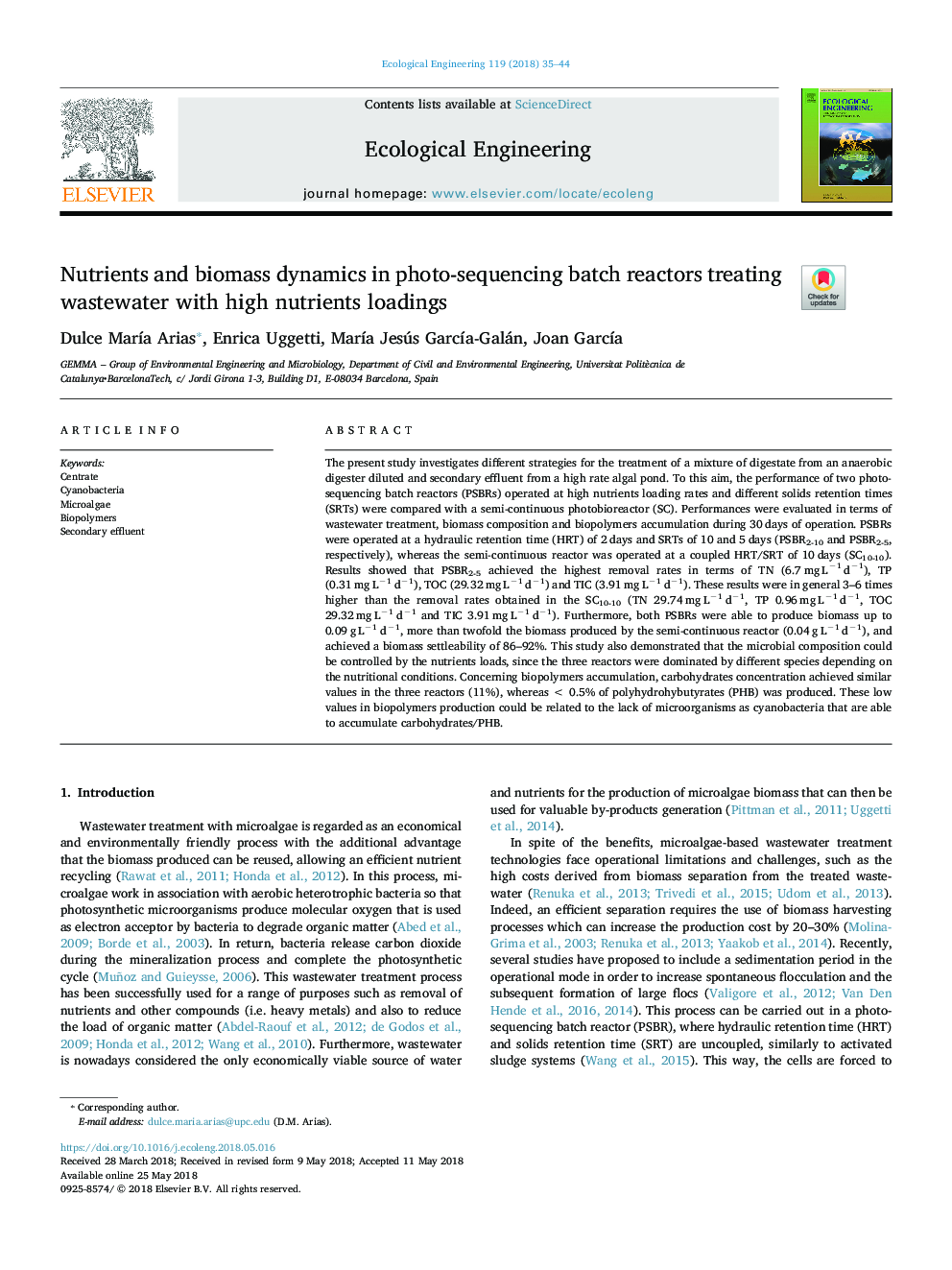| Article ID | Journal | Published Year | Pages | File Type |
|---|---|---|---|---|
| 8847779 | Ecological Engineering | 2018 | 10 Pages |
Abstract
The present study investigates different strategies for the treatment of a mixture of digestate from an anaerobic digester diluted and secondary effluent from a high rate algal pond. To this aim, the performance of two photo-sequencing batch reactors (PSBRs) operated at high nutrients loading rates and different solids retention times (SRTs) were compared with a semi-continuous photobioreactor (SC). Performances were evaluated in terms of wastewater treatment, biomass composition and biopolymers accumulation during 30â¯days of operation. PSBRs were operated at a hydraulic retention time (HRT) of 2â¯days and SRTs of 10 and 5â¯days (PSBR2-10 and PSBR2-5, respectively), whereas the semi-continuous reactor was operated at a coupled HRT/SRT of 10â¯days (SC10-10). Results showed that PSBR2-5 achieved the highest removal rates in terms of TN (6.7â¯mgâ¯Lâ1â¯dâ1), TP (0.31â¯mgâ¯Lâ1â¯dâ1), TOC (29.32â¯mgâ¯Lâ1â¯dâ1) and TIC (3.91â¯mgâ¯Lâ1â¯dâ1). These results were in general 3-6 times higher than the removal rates obtained in the SC10-10 (TN 29.74â¯mgâ¯Lâ1â¯dâ1, TP 0.96â¯mgâ¯Lâ1â¯dâ1, TOC 29.32â¯mgâ¯Lâ1â¯dâ1 and TIC 3.91â¯mgâ¯Lâ1â¯dâ1). Furthermore, both PSBRs were able to produce biomass up to 0.09â¯gâ¯Lâ1â¯dâ1, more than twofold the biomass produced by the semi-continuous reactor (0.04â¯gâ¯Lâ1â¯dâ1), and achieved a biomass settleability of 86-92%. This study also demonstrated that the microbial composition could be controlled by the nutrients loads, since the three reactors were dominated by different species depending on the nutritional conditions. Concerning biopolymers accumulation, carbohydrates concentration achieved similar values in the three reactors (11%), whereasâ¯<â¯0.5% of polyhydrohybutyrates (PHB) was produced. These low values in biopolymers production could be related to the lack of microorganisms as cyanobacteria that are able to accumulate carbohydrates/PHB.
Related Topics
Life Sciences
Agricultural and Biological Sciences
Ecology, Evolution, Behavior and Systematics
Authors
Dulce MarÃa Arias, Enrica Uggetti, MarÃa Jesús GarcÃa-Galán, Joan GarcÃa,
